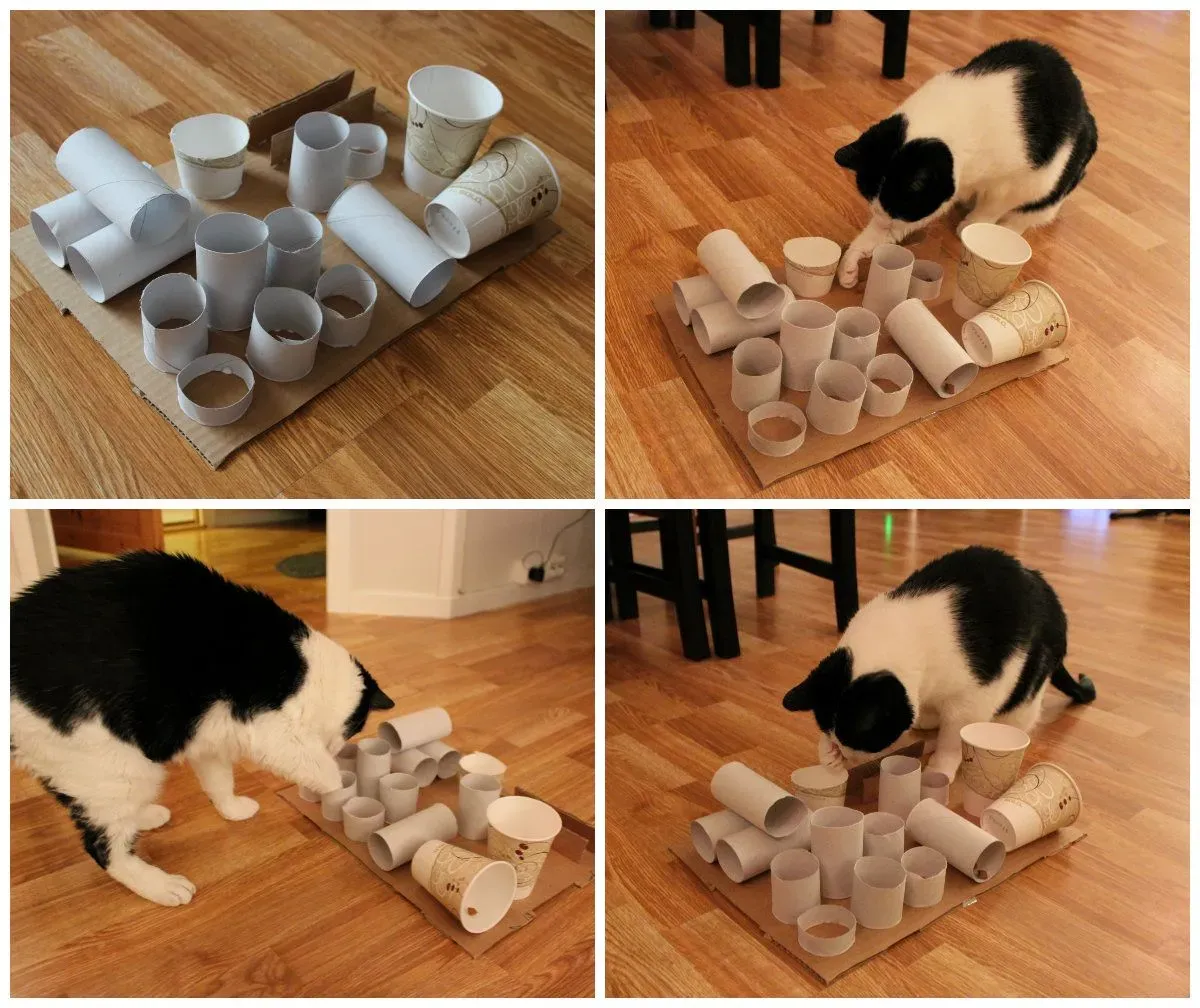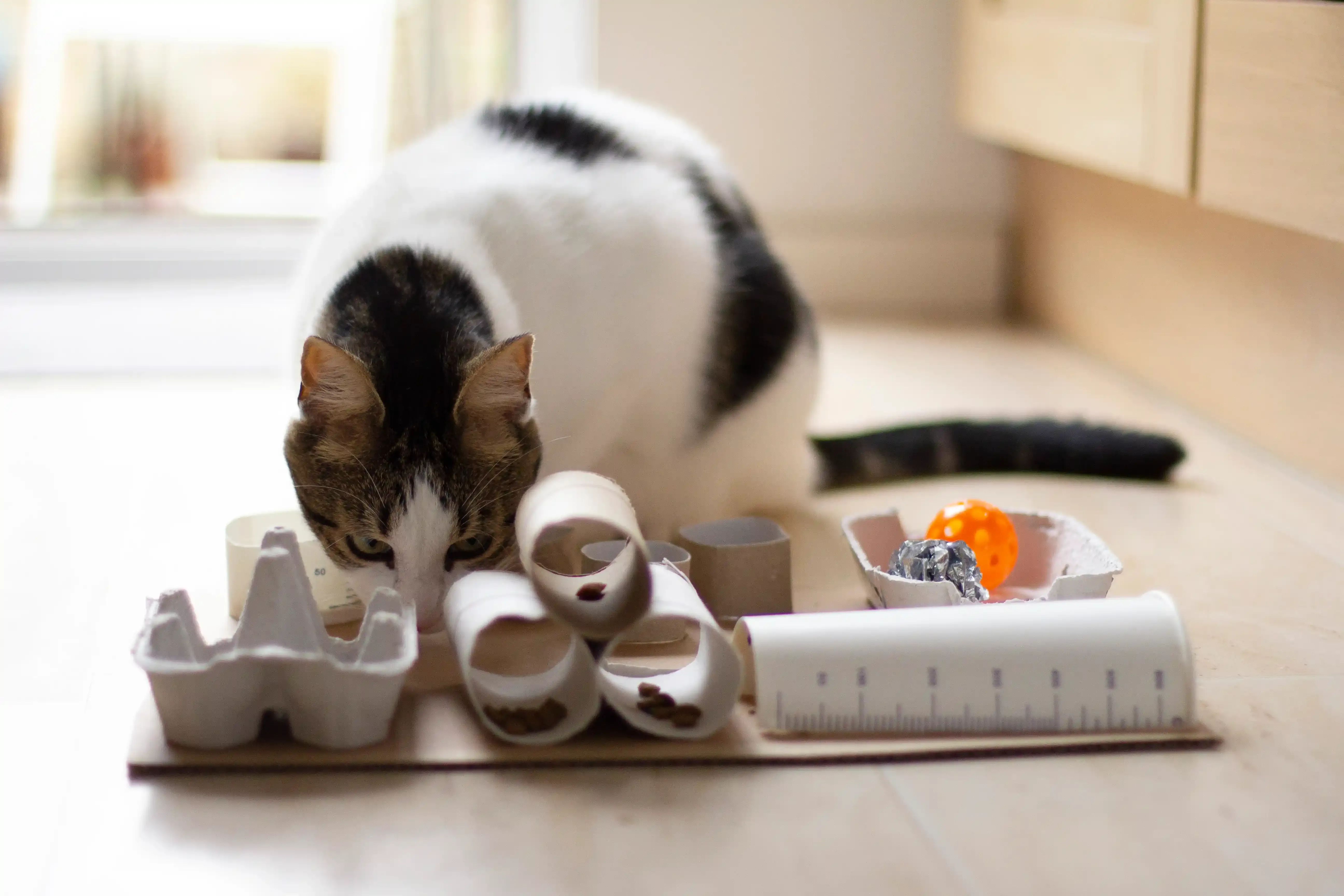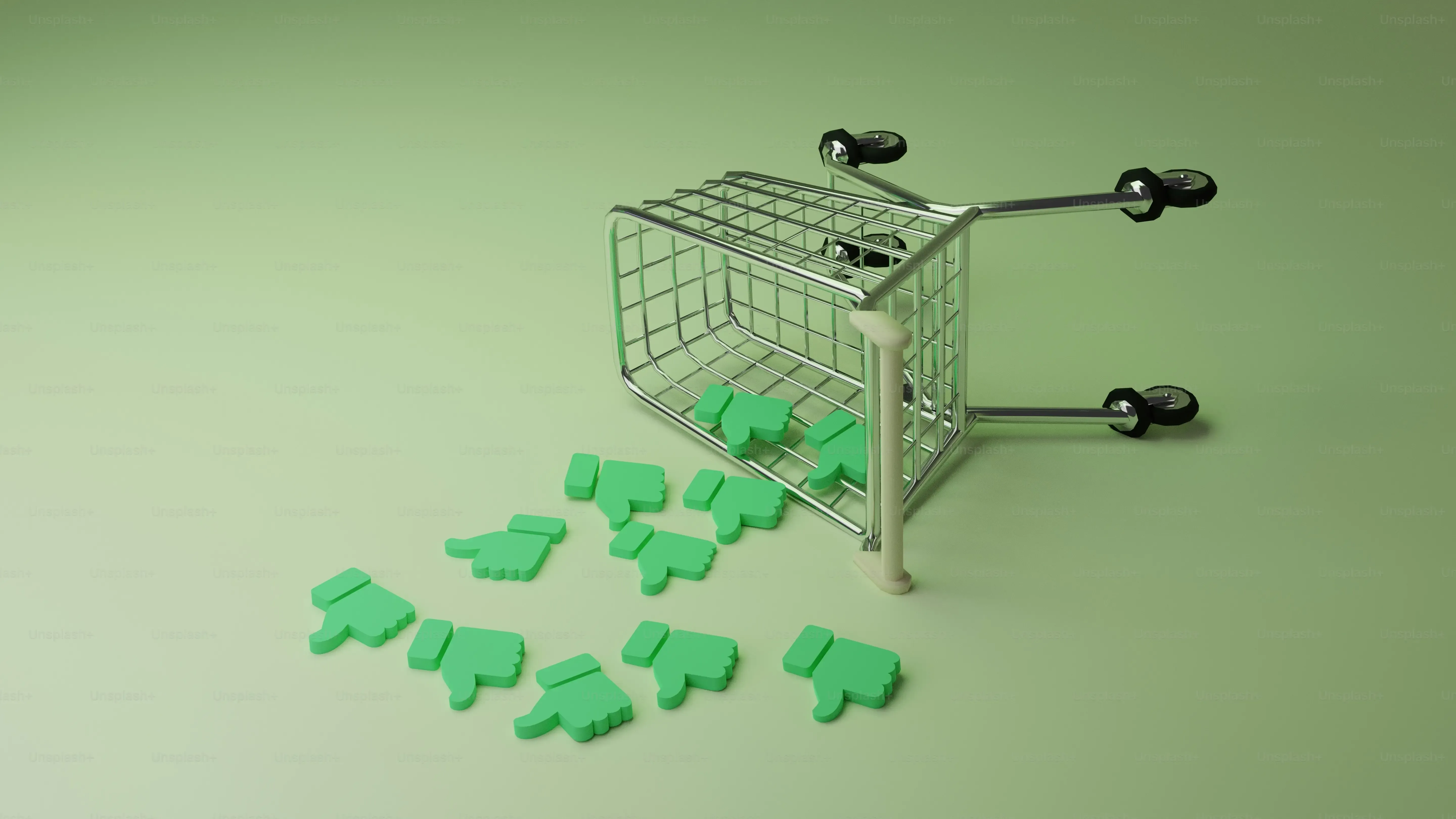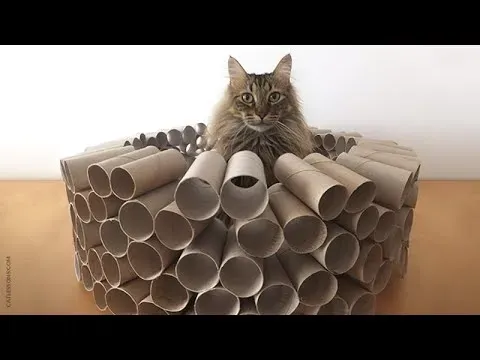Table of Contents
Your cat sleeps 16 hours a day. Great. The other 8? That's prime time for mischief if they're not properly stimulated. A bored cat is often a creative cat, and not always in ways you appreciate – think shredded upholstery, midnight zoomies, or the relentless batting of objects off high shelves. Before you resign yourself to replacing your couch annually or tripping over scattered belongings, consider the power of mental engagement. Store-bought puzzle toys can be pricey and sometimes lose their appeal quickly. That's where homemade cat puzzle toys come in.
Why Bother with Homemade Cat Puzzle Toys?

Why Bother with Homemade Cat Puzzle Toys?
So, you're wondering, "Why bother with homemade cat puzzle toys?" Look, a cat's natural state isn't just napping in sunbeams. They are hunters, hardwired to stalk, chase, and problem-solve to get their dinner. When they don't get that outlet, things go sideways. We're talking about the cat that turns your expensive rug into a scratching post, or the one who wakes you up at 3 AM because they're bored out of their tiny mind. Homemade cat puzzle toys tap into that primal drive. They make your cat work for their food or treats, providing mental stimulation that a simple bowl just can't replicate. It's not just about preventing bad behavior; it's about enriching their lives, making them happier, more confident creatures.
Easy Homemade Cat Puzzle Toys to Start With

Easy Homemade Cat Puzzle Toys to Start With
The Humble Toilet Paper Roll Challenge
let's start super simple. You just finished a roll of toilet paper? Great, you've got the base for one of the easiest homemade cat puzzle toys around. Grab a few of these cardboard tubes. Cut some holes in the sides, big enough for kibble or small treats to fall out, but not so big that it's zero effort for your cat. Fold in the ends or tape one end shut and leave the other open just a bit. Pop some food inside, and there you go. Your cat has to roll it around, bat at it, and figure out how to get the goodies out. It’s amazing how much mileage you can get from something destined for the trash.
Muffin Tin Magic with a Twist
Another winner for easy homemade cat puzzle toys involves your muffin tin. Seriously. Take a standard muffin tin and place a few pieces of kibble or treats in some of the cups. Then, cover the cups with things your cat can easily move, like crumpled paper balls, small cat-safe toys (think ping pong balls or crinkle balls), or even just lightweight cardboard circles. Your cat has to use their paws and nose to uncover the prize. It’s a simple hide-and-seek game that works their brain and fine motor skills. This is a step up from the roll but still requires minimal effort on your part.
- Empty cardboard tubes (toilet paper, paper towel)
- An old muffin tin
- Small crumpled paper balls
- Ping pong balls or small cat toys
- Cardboard pieces
- Cat kibble or small treats
Bottle Rolling for Beginners
Got an empty plastic water bottle? Rinse it out thoroughly. Poke several holes around the sides, again, sized for treats to fall out with some effort. You can use a drill bit or even a hot poker (be careful!). Make sure there are no sharp edges. Fill it with a small amount of kibble or treats, screw the lid back on tight, and present it to your cat. They'll quickly learn that batting and rolling the bottle makes food appear. It's a bit louder than the other options, but it provides great rolling action that mimics chasing prey. These are perfect entry points into the world of homemade cat puzzle toys without needing a craft store degree.
Taking it Up a Notch: More Complex Homemade Cat Puzzle Toys

Taking it Up a Notch: More Complex Homemade Cat Puzzle Toys
Alright, so your cat mastered the toilet paper roll in five minutes flat and looks at the muffin tin with disdain? Sounds like you've got a feline Einstein on your hands. Time to step up the game. Building more complex homemade cat puzzle toys requires a bit more effort than poking holes in cardboard, but the payoff is a truly challenged and engaged pet. Think multi-level structures, hidden compartments, and obstacles they actually have to navigate. This is where you can repurpose those delivery boxes piling up, bits of old pipe, or even fabric scraps to create something that requires a bit more brainpower and paw dexterity than just batting a roll.
Safety Checks for Your Homemade Cat Puzzle Toys

Safety Checks for Your Homemade Cat Puzzle Toys
Tiny Pieces are Trouble
you've crafted a masterpiece of cardboard and ingenuity, a true testament to the power of homemade cat puzzle toys. But before you unleash it on your unsuspecting feline, you need to play inspector. The biggest hazard with DIY toys? Small bits that break off. Cats, despite their sophisticated appearance, are basically furry toddlers who put everything in their mouths. Buttons, tiny plastic pieces, loose strings, even small chunks of cardboard can become choking hazards or cause internal blockages. Get down on your hands and knees, look at the toy from your cat's perspective, and tug on everything. If it looks like it could detach or be chewed into swallowable pieces, rethink it. Better safe than a frantic, expensive trip to the vet.
Material Matters and Edge Patrol
Speaking of materials, not everything in your recycling bin is cat-friendly. Avoid anything treated with chemicals, like certain types of packaging or heavily printed cardboard that might contain toxic inks. Stick to plain cardboard, untreated wood (though be wary of splinters), and fabrics you know are safe. Hot glue is generally okay when fully dried, but make sure it's not accessible to chewing. Also, check for sharp edges. Cutouts in cardboard or plastic can leave nasty points. Sand down any rough wood or plastic edges, or cover them with tape if necessary. Your goal is a challenge for their brain, not an obstacle course for their paws and tongues that ends in injury. These homemade cat puzzle toys should be fun, not frightening.
Material to Use | Material to Avoid |
|---|---|
Plain Cardboard Tubes | Heavily Printed Cardboard |
Untreated Wood | Treated or Painted Wood |
Felt or Cotton Fabric | Fabrics with Loose Threads |
Cat-Safe Glue (when dry) | Toxic Adhesives |
Supervise and Inspect Often
Even the most robust homemade cat puzzle toys won't last forever under determined feline assault. This isn't a "set it and forget it" situation. When you first introduce a new toy, stick around and watch how your cat interacts with it. Are they trying to eat the toy instead of the food? Are they managing to pull bits off? Regular inspection is key. Before each use, give it a quick once-over. Look for signs of wear and tear: frayed edges, loosened parts, holes getting too big, or anything that looks like it's about to fail. When a toy starts looking ragged, it's time to repair it or, more likely, toss it and build a new one. It's a constant cycle of creation and vigilance, but it's worth it for their safety.
Keeping the Fun Alive: Rotating and Refreshing Toys

Keeping the Fun Alive: Rotating and Refreshing Toys
So you've gone through the effort of making these awesome homemade cat puzzle toys, and your cat is loving them. Fantastic! But cats, bless their fickle hearts, get bored. Fast. That amazing toilet paper roll contraption that was a hit yesterday might be completely ignored tomorrow. The key to keeping the fun alive isn't necessarily building a brand new toy every single day (who has the time?), but rather rotating and refreshing the ones you have. Think of it like their toy box – you wouldn't leave every single toy out all the time. Put a few away for a week or two, then bring them back out. It’s like a reunion! Suddenly, that old muffin tin puzzle feels new and exciting again. You can also refresh the toys by changing the type of treat inside, adding a sprinkle of catnip (if your cat responds to it), or even just moving the toy to a different location in the house. A familiar challenge in a new spot can make all the difference in keeping those homemade cat puzzle toys engaging and preventing your feline friend from declaring them yesterday's news.
More Than Just a Toy: The Payoff
So there you have it. Turning everyday objects into homemade cat puzzle toys isn't rocket science, and it certainly beats watching your cat stare blankly at a laser dot or, worse, plot the demise of your favorite houseplant. Providing these little challenges taps into what makes a cat a cat – the hunter, the strategist. It can help curb destructive behaviors that stem from boredom and provide a bit of quiet satisfaction when you see them finally figure out how to get that kibble. Give it a shot. Your furniture might thank you, and your cat will definitely have something better to do than judge your life choices from the top of the refrigerator.